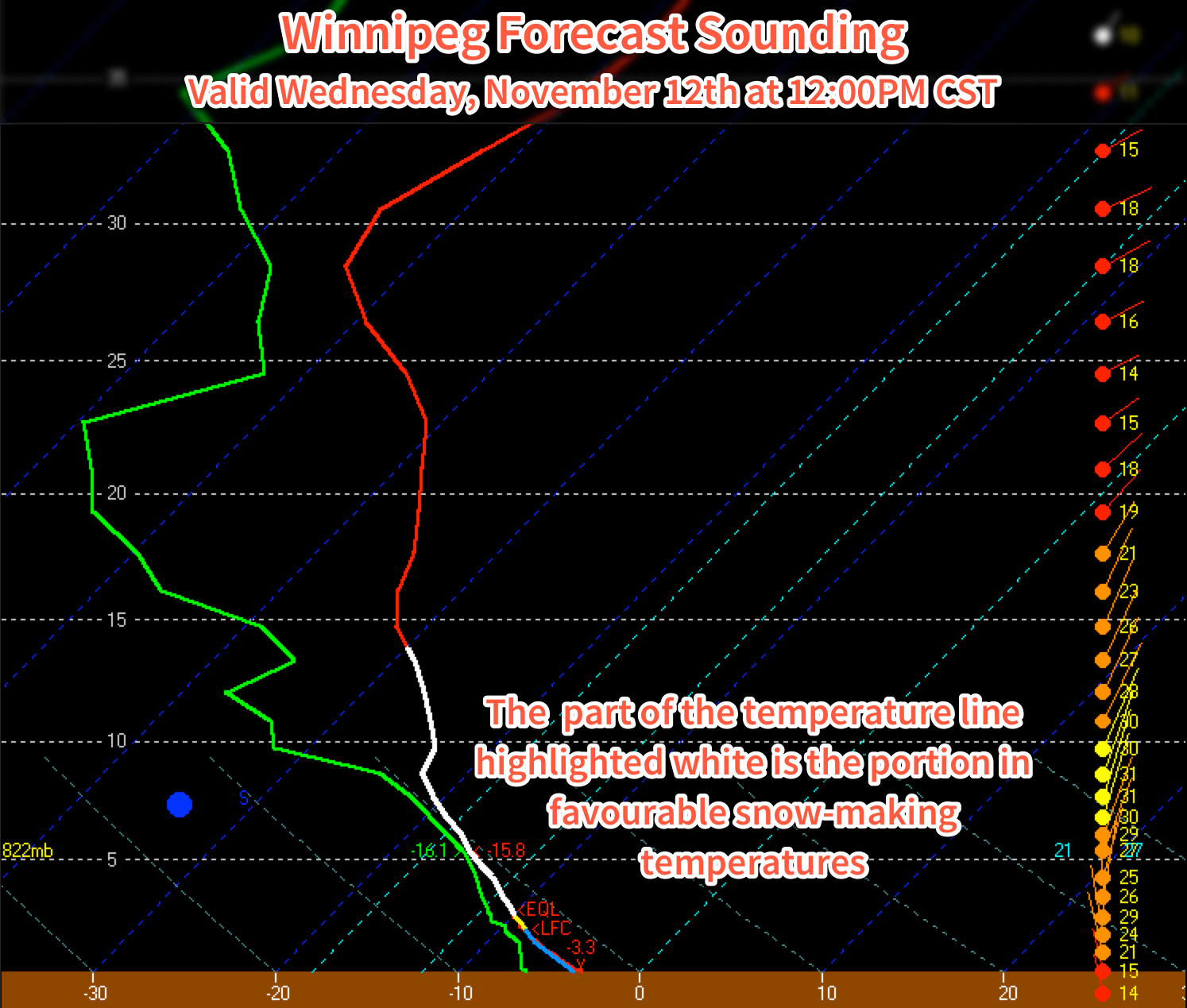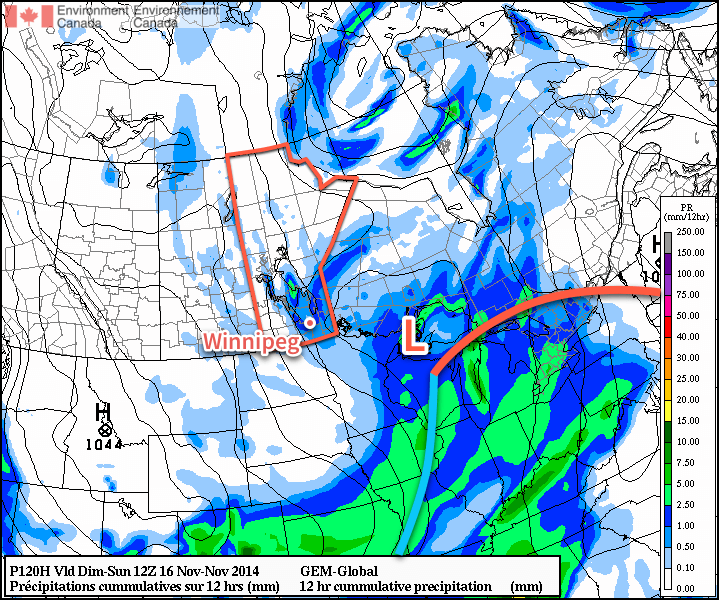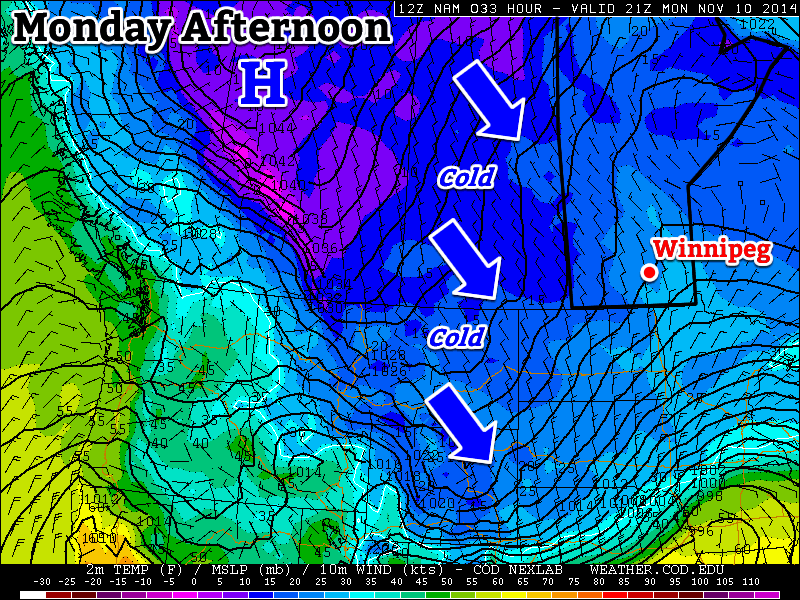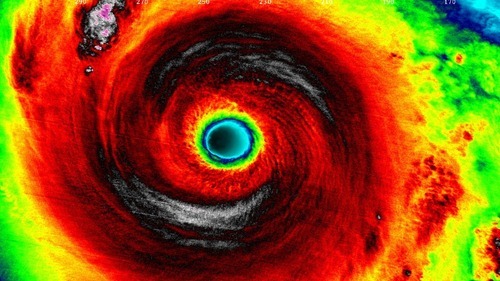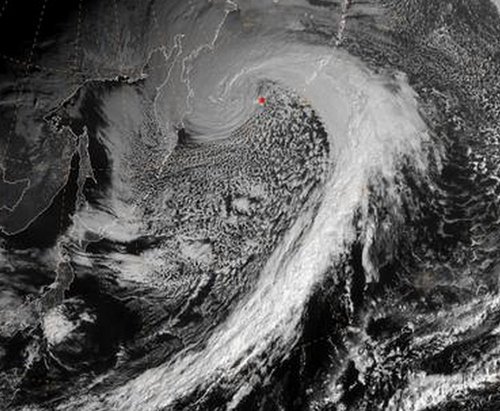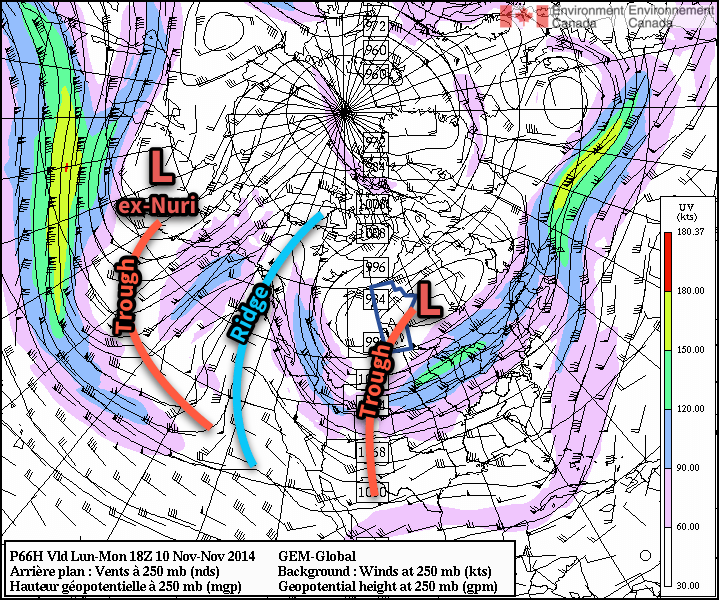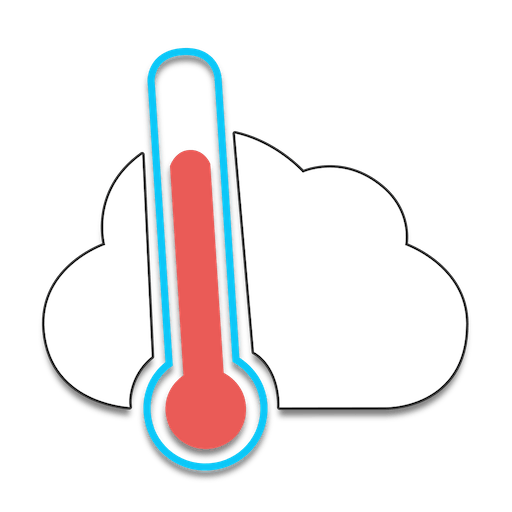Fairly quiet weather is on tap for Winnipeg as the Arctic air mass that has been entrenched over the region is reinforced by numerous weak systems drifting southwards in the northerly flow over the province. As a result, temperatures will remain well below normal through the weekend with some flurry activity possible.
Today will be the nicest day of the next few with sunny skies as we head towards a high of around -7°C. Winds will be relatively light out of the west at 15-25km/h. Tonight will see a low near -15°C.
Saturday will bring mixed skies once again with a high near 8°C as winds shift back to northwesterly behind a weak trough moving through and lake-effect flurries start up again. No accumulations are expected, but you may see a few flakes in the air throughout the day on Saturday. Heading into Saturday night, a low pressure system that is making an extrodinary trip from essentially the North Pole straight to Southern Manitoba will begin working into the region. Cloud and a few flurries will spread into the region ahead of it through Saturday night.
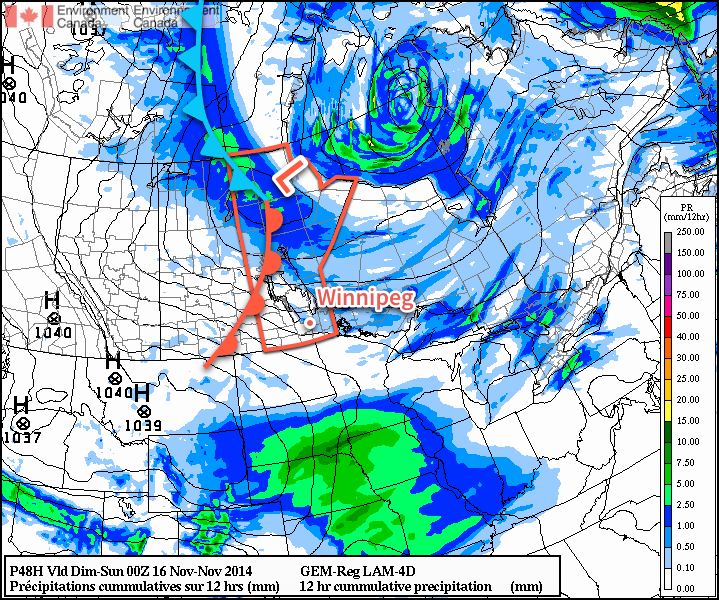
Sunday will be a mainly cloudy day with some light flurries through the Red River Valley. Northwesterly winds will result in some slightly heavier snow in the lee of the Manitoba lakes, however no significant accumulations are expected. The ability for the lakes to produce heavy snowfall is rapidly diminishing as ice cover continues to grow and expand, covering up the open water.
With all the cloud around and northwesterly winds in place, temperatures should climb a couple degrees warmer than Friday or Saturday to around -6 or -5°C. Heading into Sunday night, the clouds will likely break up a little bit, although the chance for flurries will continue. The low should drop to around -12°C, however it may end up a couple degrees warmer or cooler depending exactly on how much clearing takes place.
Quiet Pattern Continues
Looking ahead to next week, temperatures look to remain fairly steady with little expected for snowfall. Long-range outlooks show a move out from below-normal temperatures, but that’s more a result of the normal highs gradually falling. No major snowfalls are in the foreseeable future.
